This is an old revision of this page, as edited by ConfuciusOrnis (talk | contribs) at 13:41, 18 September 2007 (→Genetics: null: No, i've fixed it now, just be sure that the main article is spelt with the first letter capitalised in the intro template and the should be sorted properly). The present address (URL) is a permanent link to this revision, which may differ significantly from the current revision.
Revision as of 13:41, 18 September 2007 by ConfuciusOrnis (talk | contribs) (→Genetics: null: No, i've fixed it now, just be sure that the main article is spelt with the first letter capitalised in the intro template and the should be sorted properly)(diff) ← Previous revision | Latest revision (diff) | Newer revision → (diff)| An editor has nominated this article for deletion. You are welcome to participate in the deletion discussion, which will decide whether or not to retain it.Feel free to improve the article, but do not remove this notice before the discussion is closed. For more information, see the guide to deletion. Find sources: "Introduction to evolution" – news · newspapers · books · scholar · JSTOR%5B%5BWikipedia%3AArticles+for+deletion%2FIntroduction+to+evolution%5D%5DAFD |
- To see a brief description of evolution in simpler language, visit the Simple Misplaced Pages article on evolution
Evolution is the accumulation of changes through succeeding generations of organisms that results in the emergence of new species. Since the origin of life, evolution has transformed the first species (the common ancestor of all living things) into a large number of different species.
Evolutionary biology, the scientific study of evolution, has helped provide a clear understanding of this process. For example, Gregor Mendel's work with plants demonstrated the hereditary patterns of genetics which are the source of variation between organisms. The discovery of the molecular structure of DNA combined with advances in the field of population genetics has led to a better understanding of how new species develop from ancestral forms, an important component of evolution known as speciation.
The theory of evolution is the foundation of nearly all research conducted in biology and much of molecular biology, paleontology, and taxonomy as well. Substantiated by a large quantity of reliable scientific evidence, evolution is one of the best supported theories in all of science. However, while the general theory is agreed upon, uncertainty remains regarding the detailed mechanisms of change.
Template:Evolution4
Darwin's idea: evolution by natural selection
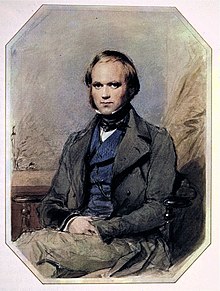
In 1859, Charles Darwin (1809–1882) published The Origin of Species, which articulated the first full-fledged theory of evolution by natural selection. Darwin viewed the history of life like a tree, each fork in the tree’s limbs representing a shared ancestry. The tips of the limbs represented modern species and the branches represented the common ancestors shared amongst species. To explain these relationships, Darwin contended that all living things were related and descended from a few forms, or even from a single common ancestor, in a process he described as "descent with modification".
Darwin's view was controversial because humans did not receive special consideration in this evolutionary tree: they were merely one of its many branches. Though he did not make this explicit at first, his friend and supporter T. H. Huxley soon presented evidence that humans and apes shared a common ancestor. The popular press of the day misinterpreted this as an assertion that humans were descended from monkeys.
Darwin's explanation of the mechanism of evolution relied on his theory of natural selection, a theory developed from the following observations:
- If all the individuals of a species reproduced successfully, the population of that species would increase exponentially.
- Except for seasonal fluctuations, populations tend to remain stable in size.
- Environmental resources are limited.
- The traits found in a population vary extensively. No two individuals in a given species are exactly alike.
- Many of the variations found in a population can be passed on to offspring.
From these observations, Darwin deduced that the production of more offspring than the environment can support leads to a struggle for existence, with only a small percentage of individuals surviving in each generation. He noted that the chance for surviving this struggle is not random, but depends on how well-adapted each individual is to its environment. Well-adapted, or "fit" individuals will more likely leave a greater number offspring than their less well-adapted competitors. Darwin concluded that the unequal ability of individuals to survive and reproduce leads to gradual changes in the population as the traits which help the organism survive and reproduce accumulate over generations and those that inhibit its survival and reproduction are lost. Darwin used the term natural selection to describe this process.
The variations in a population arise by chance mutations in DNA, but natural selection is not a process of chance: the environment determines the probability of reproductive success. The end products of natural selection are organisms that are adapted to their present environments.
Natural selection does not involve progress towards an ultimate goal. Evolution does not necessarily strive for more advanced, more intelligent, or more sophisticated life forms. For example, fleas (wingless parasites) are descended from a winged, ancestral scorpionfly, and snakes are lizards that no longer require limbs. Organisms are merely the outcome of variations that succeed or fail, dependent upon the environmental conditions at the time. In reality, when the environment changes, most species fail to adapt and become extinct.
Mendel’s contribution: heredity
Darwin’s theory of natural selection laid the groundwork for modern evolutionary theory. However, Darwin lacked an accurate explanation for the source of variations within populations. Like many of his predecessors, Darwin incorrectly deduced that heritable traits were a product of the environment, assuming that characteristics acquired during an organism's lifetime could be passed on to its offspring (e.g. giraffes stretching for leaves on higher branches would give birth to offspring with longer necks). This misconception (of the inheritance of acquired characters) became known as Lamarckism, after one of its primary supporters, Jean-Baptiste Lamarck (1744–1829). However, the suggestion that frequently used body structures become better developed, while unused structures deteriorate, is not supported by evidence.
The missing information necessary to help explain the emergence of new traits in offspring was provided by the pioneering genetics work of Gregor Mendel (1822–1884). Mendel’s experiments with breeding pea plants demonstrated that heredity works by reshuffling and recombining factors (what we now know as genes) during sexual reproduction. Genes are the basic units of heredity in living organisms. They contain the biological information that directs the physical development and behavior of the organism. It is this reshuffling of the genetic code that ensures that no two individuals will be exact copies of each other. The merging of Darwin's theory with an understanding of heredity led to a clear understanding of the mechanisms that cause evolution.
Evidence for evolution
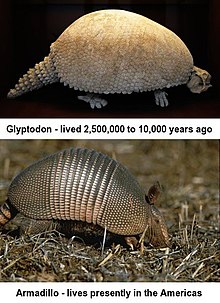
Science has discovered a wide range of evidence for evolution, with fossil records being the most prominent. Studies of the anatomical and genetic similarities between present-day species present additional evidence for evolution.
The fossil record
Paleontology, the study of fossils, supports the idea that all living creatures are related. Fossils provide evidence that accumulated changes in organisms over long periods of time lead to the diverse forms of life we see today. A fossil itself reveals the organism's structure and the relationships between present and extinct species, allowing paleontologists to construct a family tree for all of the life forms on earth.
Modern paleontology began with the work of Georges Cuvier (1769-1832). Cuvier noted that, in sedimentary rock, each layer contained a specific group of fossils. The deeper layers, which he conjectured to be older, contained simpler life forms. He also noted that many forms of life from the past are no longer present today. Cuvier proposed the idea of catastrophism, which explained the fossil record in the light of the theological views of his time. He proposed that catastrophes had occurred in localized areas throughout the earth’s history. Such areas were then repopulated by species that migrated from nearby locations.
At present, many fossils have been discovered and identified. These fossils serve as a chronological record of evolution. The fossil record also provides examples of transitional species that demonstrate ancestral links between past and present life forms.
One such transitional fossil is Archaeopteryx, an ancient creature that had the distinct characteristics of a reptile, yet also possessed the feathers of a bird. The implication from such a find is that modern reptiles and birds arose from a common ancestor.
Comparative anatomy
Further information: Convergent evolution and Divergent evolution 
|
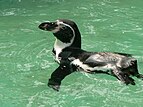  
|
Taxonomy is the branch of biology that names and classifies all living things. The founder of the science of taxonomy was Carolus Linnaeus (1707-1778). Linnaeus placed organisms into categories based on similar physical features (sometimes called their morphology). He never suggested that organisms that fell into similar groups were related; rather he followed the conventions of his time that all species were uniquely created and remained fixed and unchanging.
Today, however, scientists use morphological similarities to assist them in categorizing life forms based on ancestral relationships. For example, orangutans, gorillas, chimpanzees, and humans all belong to the same taxonomic grouping referred to as a family – in this case the family called Hominidae. These animals are grouped together because of similarities in morphology that come from common ancestry (called homology).
Strong evidence for evolution comes from analysis of homologous structures in different species that no longer perform the same task. One example is the forelimbs of mammals. The forelimbs of a human, cat, whale, and bat all have strikingly similar bone structures. However, each of these four species' forelimbs performs a different task. The same bones that construct a bird's wings, which are used for flight, also construct a whale's flippers, which are used for swimming. Such a "design" makes little sense if they are unrelated and uniquely constructed for their particular tasks. The theory of evolution explains these homologous structures: all four animals shared a common ancestor, and each has undergone change over many generations. These changes in structure have produced forelimbs adapted for different tasks. Darwin described such changes in morphology as descent with modification.
Embryology
In some cases, anatomical comparison of structures in the embryos of two or more species provides evidence for a shared ancestor that may not be obvious in the adult forms. Such homologies might be lost or take on different functions as the embryo develops. For example, part of the basis of classifying the vertebrate group (which includes humans), is the presence of a tail (extending beyond the anus) and pharyngeal gill slits; both appearing during some stage of development. In humans, the pharyngeal gill slit develops into the Eustachian tube, and the tail degenerates during embryonic development; thus these morphological similarities shared with other vertebrates could easily be over looked in the adult forms.
Because of the morphological similarities present in embryos of different species during development, it would be easy to assume that organisms re-enact their evolutionary history as an embryo – for example, human embryos passing through an amphibian then a reptilian stage before completing their development as mammals. The misconception that organisms re-enact their evolution during their embryology is known as ontogeny recapitulates phylogeny. Such a re-enactment is not supported by scientific evidence. What does occur is a sequence of similar embryonic stages that exhibit similar traits, not a sequence of adult stages depicting evolution.
Vestigial structures
Homology also includes a unique group of shared structures referred to as vestigial structures. The term vestigial refers to anatomical parts that are of minimal, if any, value to the organism that possesses them. These apparently illogical structures are remnants of organs that played an important role in ancestral forms. For example, whales still possess small vestigial leg bones which appear to be remnants of the legs that their ancestors used to walk on land.
Humans also have many vestigial structures, including the ear muscles, the wisdom teeth, the appendix, the tail bone, body hair (including goose bumps), and the semilunar fold in the corner of the eye.
Convergent evolution
Anatomical comparisons can also be misleading. Organisms that share similar environments will often develop similar physical features; a process known as convergent evolution. For example, both sharks and dolphins have similar body forms, yet are only distantly related – sharks are fish and dolphins mammals. Such similarities are a result of both populations being exposed to the same selective pressures. Within both groups, changes that aid swimming would be favored. Thus, over time, they develop similar morphology, even though they are not closely related.
Artificial selection

Artificial selection is the controlled breeding of domestic plants and animals. In controlled breeding, humans determine which animals will reproduce, and to some degree, which alleles will be passed to future generations. The process of artificial selection has a significant impact on the evolution of domestic animals. For example, people have produced different types of dogs by controlled breeding. The differences between the Chihuahua and the Great Dane are the result of artificial selection. Despite the dramatic differences in physical appearance, they share a recent common ancestor.
Darwin drew much of his support for natural selection from observing the outcomes of artificial selection. Much of his book On the Origin of Species was based on his observations of the diversity in domestic pigeons arising from artificial selection. Darwin proposed that if dramatic changes in domestic plants and animals could be achieved by humans in short periods, then natural selection, given millions of years, could produce the differences between living things today. In fact, there is no real difference in the genetic processes underlying artificial and natural selection. As in natural selection, the variations are a result of random mutations; the only difference is that in artificial selection, humans select which organisms will be allowed to breed.

Molecular biology
Every living organism contains molecules of DNA, RNA, and protein. If two organisms are closely related, these molecules will be very similar. On the other hand, if the organisms are distant relations, these molecules will show more differences. For example, siblings are very closely-related and thus have very similar DNA sequences. The field of molecular systematics focuses on working out evolutionary relationships by measuring similarities in these molecules. Such molecular comparisons have allowed biologists to build a relationship tree of the evolution of life on earth. Scientists have made great strides in analyzing these molecules, particularly the DNA that makes up organisms' genes. The exact form of these genes is called the genotype, which influences the morphology (or phenotype) of an organism; thus, analyzing genes provides a clear understanding of the relationships between species.
Comparing both DNA and proteins has been extremely useful when studying species that are very closely related. The extent of their relationship can be determined from how similar these molecules are. For example, comparison of the DNA in chimpanzees with that of gorillas and humans demonstrated that chimpanzees share more genetic similarities with humans than with gorillas. Some studies suggest as much as 96% similarity between the genes of humans and chimps. The genetic similarity implies that humans and chimpanzees share a close evolutionary relationship as well.
Genetic comparisons also allow scientists to draw conclusions about organisms whose common ancestors lived such a long time ago that morphological similarities are not apparent.
Co-evolution
Co-evolution is a process in which two or more species influence the evolution of each other. All organisms are influenced by life around them; however, to meet the definition of "co-evolution", there must be evidence that some genetically determined traits in each species result from the interaction between the two organisms.
An extensively documented example of co-evolution involves the relationship between an ant called Pseudomyrmex and the acacia, a plant that the ant uses for food and shelter. The relationship between the two is so intimate that it has led to the evolution of special structures and behaviors in both organisms. The ant defends the acacia against herbivores and removes parasitic fungi from its leaves. In return, the plant has evolved swollen thorns that the ants use as shelter, and special flower parts that the ants eat. Such co-evolution does not imply that the ants and the tree somehow choose to behave in such an altruistic (selfless concern for the welfare of others) manner for each others' benefit. Rather, across a population small genetic changes in both ant and tree benefited each on its own accord. The benefit gave a slightly higher chance of the characteristic being passed on to the next generation, where it gave the new tree (and the new ant colony) a greater chance of survival. Over time, successive mutations created the relationship we observe today.
Population genetics
Further information: Population Genetics and Hardy-WeinbergSome definitions
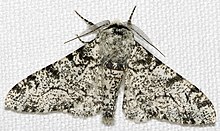
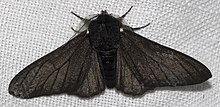
From a genetic viewpoint, evolution is a generation-to-generation change in the frequencies of alleles within a population that shares a common gene pool. A population is a localized group of individuals belonging to the same species. For example, all the moths of the same species living in an isolated forest are a population. An allele is one specific form of a gene; for example, a gene for coloration in moths may have two alleles, black and white. A gene pool is the complete set of alleles in a single population. Each allele occurs a certain number of times in the gene pool. The fraction of genes that belong to a given allele is called the allele frequency. Therefore, if half of the body-color genes in a population of moths are genes for black-bodies, then the black-body allele frequency is 0.50 or 50%. Evolution occurs when there are changes in the frequencies of alleles within a population of interbreeding organisms.
Hardy-Weinberg equilibrium
A theory known as the Hardy-Weinberg principle states that the frequencies of alleles in a sufficiently large population will remain constant if the only forces acting on the population are:
- random reshuffling of alleles during the formation of the gametes, such as the sperm and egg.
- random combination of the genes in these sex cells during fertilization, the process in which the egg and sperm combine to form a new cell.
A population in which the frequencies of alleles are constant is not experiencing evolution.
An example

Suppose a group of mice inhabit a barn. In this population, there are only two versions of the gene that controls fur color. One allele produces black fur and accounts for 75% of the genes, the other produces white fur and makes up the remaining 25% of the genes. If an allele’s chance of being passed on to the next generation is due entirely to random processes (the shuffling and combining that takes place in the formation of sex cells and fertilization), the allele frequencies will stay the same and the composition of the gene pool remains 75% black-coding genes and 25% white-coding genes. Since there is no change in the allelic frequencies, there is no evolutionary change in fur color. This population is in Hardy-Weinberg equilibrium or is non-evolving.
It is very rare for natural population to experience no change in the frequency of alleles from generation to generation. Therefore, frequencies of alleles in a gene pool are typically changing, resulting in evolution of populations over successive generations. Several forces may change the composition of the gene pool. These forces are described below along with a hypothetical example in a population of moths.
- Exchange of alleles between members of different populations. Exchanges occur when new members join the population or when others leave. Such migration between populations is called gene flow. Hypothetical example: A group of black-bodied moths are blown in from a nearby forest increasing the frequency of the black allele in a previously isolated population.
- Mutations can create new alleles and thus change the frequency of the pre-existing alleles. Mutations immediately change the gene pool by substituting one allele for another. Mutations have very little impact on the overall frequency of a large population. Hypothetical example: One moth passes on an inheritable allele for brown-body color as the result of a random mutation in one of its sex cells.
- Preference for any particular allele during mate selection. Hypothetical example: Female moths prefer to mate with black-bodied males resulting in a disproportional number of black alleles in the next generation
- Natural selection can reduce or increase the frequency of a specific allele in a gene pool. The chance that each allele has for survival and reproduction must be the same if the frequency of alleles is to remain constant. Hypothetical example: The moths live on a tree with lightly colored bark. As a result, the black-bodied moths are more likely to be eaten by predators.
Small populations are very susceptible to chance fluctuations in the number of individuals, a condition known as genetic drift. Two common situations may arise that affect the genetic makeup of a small population as a result of genetic drift.
- The first is the The Bottleneck Effect. This occurs because random chance events, such as fires or floods, significantly reduces the number of individuals in a population. The remaining members may not accurately represent the original gene pool. Hypothetical example: A fire destroys most of the forest killing all but 10 moths. The originally population was almost exclusively white-bodied, but as a result of chance the 10 remaining moths are all black.
- The second example of genetic drift is known as The Founder Effect. This occurs whe only a few individuals colonize a new habitat. The smaller the founding party the less likely its gene pool will represent the gene pool of the original population. Hypothetical example: Five black moths from a predominant white-bodied population are transported to a different forest where they are the first inhabitants. The resulting population will not represent the same allele distribution as the population from which they left.
Species
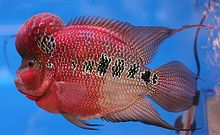
Given the right circumstances, and enough time, evolution leads to the emergence of new species. Scientists have struggled to find a precise and all-inclusive definition of a species. A definition widely accepted by biologist was developed by Ernst Mayr (1904-2005) in which he defined a species as a population or group of populations whose members have the potential to interbreed naturally with one another to produce viable, fertile offspring. Also, the members of a species cannot produce viable fertile offspring with members of other species.
Speciation is the lineage-splitting event that results in two separate species forming from a single common ancestral population. The most widely accepted method of speciation is called allopatric speciation. This requires the geographic separation of a population. Separation may be due to a variety of geological forces such as the emergence of mountain ranges or the formation of canyons. For speciation to occur, separation must be complete to the point that genetic exchange between the two populations is completely disrupted. In their separate environments, the genetically isolated groups follow their own unique evolutionary pathways. Each group will accumulate different mutations as well as be subjected to different selective pressures. The accumulated genetic changes may result in separated populations that can no longer interbreed if they are reunited. Barriers that prevent interbreeding are either prezygotic (prevent mating or fertilization) or postzygotic (barriers that occur after fertilization). If interbreeding were no longer possible, then they would be considered different species.
A common criticism from those who reject evolution as a viable theory is their claim that speciation has never been observed. Speciation has been observed in several groups of organisms, including bacteria, round worms, insects, and fish; as well as in several groups of plants. In addition, past speciation events are recorded in fossils.
For example, scientists have documented the formation of five new species of cichlid fishes from common ancestry since they were isolated less than 4000 years ago from the parent stock, in Lake Nagubago. The basis for speciation in this case was morphology (physical appearance) and lack of natural interbreeding. These fish have complex mating rituals and different coloration, which with only slight modifications has changed the mate selection process. The five forms that arose could not be convinced to interbreed.
Inter-species barriers
Reproductive barriers that prevent interbreeding can be classified as either prezygotic barriers or postzygotic barriers.
Prezygotic barriers
Prezygotic barriers prevent mating between species or prevent the fertilization of the egg if the species attempt to mate. Some examples are:

- Temporal isolation - Occurs when species mate at different times. Populations of the western spotted skunk (Spilogale gracilis) overlap with the eastern spotted skunk (Spilogale putorius) yet remain separate species because the former mates in summer and the latter in late winter.
- Behavioral isolation - Signals that elicit a mating response may be sufficiently different to prevent a desire to interbreed. The rhythmic flashing in male fireflies is species-specific and thus serves as a prezygotic barrier.
- Mechanical isolation - Anatomical differences in reproductive structures may prevent interbreeding. This is especially true in flowering plants that have evolved specific structures adapted to certain pollinators. Mechanical barriers often contribute to reproductive isolation of flowers that are pollinated by insects. This has been well documented in the orchid family.
- Gametic isolation - The gametes of the two species are chemically incompatible, thus preventing fertilization. Gamete recognition may be based on specific molecules on the surface of the egg that attach only to complementary molecules on the sperm. Such mechanisms are common in fish species.
- Geographic/habitat isolation - Geographic: The two species are separated by large-scale physical barriers, such as a mountain or large body of water, and therefore cannot mate with each other. This is illustrated in two separate species of antelope squirrels, genus Ammospermophilus, which inhabit opposite sides of the Grand Canyon. Habitat: The two species prefer different habitats, even if they live in the same general area, and therefore do not encounter each other. For example, two different species of garter snakes in the genus Thamnophis occur in the same area but one prefers the water while the other prefers dry land.
Postzygotic barriers
Postzygotic barriers occur after fertilization, usually resulting in the formation of a hybrid zygote that is neither viable nor fertile. This is typically a result of incompatible chromosomes in the zygote. Some examples include:
- Reduced hybrid viability - A barrier between species occurs after the formation of the zygote, resulting in incomplete development and death of the offspring.
- Reduced hybrid fertility - Even if two different species successfully mate, the offspring produced may be infertile. Crosses of horse species within the genus Equus tend to produce viable but sterile offspring. For example, crosses of zebra x horse and zebra x donkey produce sterile zorses and zedonks. Horse-donkey crosses produce sterile mules. Very rarely, a female mule may be fertile.
- Hybrid breakdown - Some hybrids are fertile for a single generation but then become weak or inviable.
Different perspectives on the mechanism of evolution
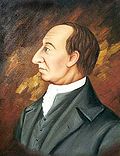
|
| James Hutton |
| File:NaturalhistoryMag.jpg |
| Stephen Jay Gould |

|
| Richard Dawkins |
The theory of evolution is widely accepted among the scientific community, serving to link the diverse specialty areas of biology. Evolution provides all of biology with a solid scientific base. The significance of evolutionary theory is best described by the title of a paper by Theodosius Dobzhansky (1900-1975), published in American Biology Teacher; "Nothing in Biology Makes Sense Except in the Light of Evolution."
Nevertheless, the theory of evolution is not dogmatic. In fact, there is much discussion within the scientific community concerning the mechanisms behind the evolutionary process. For example, the rate at which evolution occurs is still under discussion. In addition, the unit of evolutionary change, the organism or the genes, is not agreed on.
Rate of change
Two views exist concerning the rate of evolutionary change. Darwin and his contemporaries viewed evolution as a slow and gradual process. Evolutionary trees are based on the idea that profound differences in species are the result of many small changes that accumulate over great periods.
The view that evolution is gradual had its basis in the works of the geologist James Hutton (1726-1797) and his theory called "Gradualism". Hutton's theory suggests that profound geological change is the cumulative product of slow, continuous processes. A similar perspective was adopted for biological changes.
Such a view fails to explain the fossil record, which shows evidence of new species appearing suddenly, then persisting in that form for long periods. The paleontologist Stephen Jay Gould (1940-2002) developed a model that suggests that evolution continues through periods of rapid change alternating with periods of relative stability, a model called "Punctuated Equilibrium".
Unit of change
It is generally accepted amongst biologists that the unit of selection in evolution is the organism, and that natural selection serves to either enhance or reduce the reproductive potential of an individual. Reproductive success, therefore, can be measured by the volume of an organism's surviving offspring. The organism view has been challenged by a variety of biologists, as well as philosophers. Richard Dawkins, for example, proposes that much insight can be gained if we look at evolution from the gene's point of view, and view natural selection as selecting amongst genes, in addition to organisms. The perspective that genes are the primary unit of evolution is captured in the following quotation from his book, The Selfish Gene:
Individuals are not stable things, they are fleeting. Chromosomes too are shuffled to oblivion, like hands of cards soon after they are dealt. But the cards themselves survive the shuffling. The cards are the genes. The genes are not destroyed by crossing-over; they merely change partners and march on. Of course they march on. That is their business. They are the replicators and we are their survival machines. When we have served our purpose we are cast aside. But genes are denizens of geological time: genes are forever.
Others view selection working on many levels, not just at a single level of organism or gene; for example, Stephen Jay Gould called for a hierarchical perspective on selection.
Summary
| Evolution in popular culture |
| As Darwin's work spread and became better known, references to it began appearing in the popular culture of the day. Some of the better-known Victorian references that became associated with it include: |
| "Survival of the fittest" - used by Herbert Spencer in Principles of Biology (1864) |
| "Nature, red in tooth and claw" - from Alfred Lord Tennyson's In Memoriam A.H.H. (1849) |
| It even merited a song in Gilbert and Sullivan's 1884 opera, Princess Ida, which concludes: "Darwinian man, though well behaved, |
Evolution explains the variety of biological species. Evolution is the result of two basic mechanisms:
- Evolution requires genetic variation within the population. Offspring are not perfect copies of their parents, or each other. If they were, the only factor determining survival and reproductive success would be random chance.
- Some offspring, by chance, have features that allow them to survive and thrive better than others. The offspring that survive will be more likely to have offspring of their own. Some of these useful features are passed along to new generations.
Evolution is not a random process for creating new life forms. Mutations are (partly) random, but natural selection is far from random. Therefore, evolution is an inevitable result of imperfectly copying, self-replicating machines reproducing over billions of years under the selection pressure of the environment. There are many misconceptions about evolution, that can lead to unnecessary confusion and objections to the theory of evolution.
The theory of evolution is supported by a tremendous amount of evidence. Evolution has been observed in the laboratory. Domesticated animals evolve as we selectively breed them for certain traits. The records of past evolution are found in fossils as well as in our fundamentally similar genetic codes, demonstrating common ancestry of all organisms, both surviving and extinct.
Evolution is one of the most successful scientific theories ever produced and is universally accepted by biological scientists. An understanding of evolution underlies all biological sciences and much of medicine.
Notes
- Smith, John Maynard (1998). Evolutionary Genetics Oxford University Press; ISBN-10: 0198502311. A comprehensive introduction to the molecular and population aspects of evolutionary genetics.
- Delgado, Cynthia (2006) Finding the Evolution in Medicine – Article in NIH Record (National Institutes of Health).
- van Wyhe, John (2006). Charles Darwin: gentleman naturalist. The Complete Works of Darwin Online. Retrieved on 2007-08-17.
- ^ Campbell, Neil & Reece, Jane (2004) Biology 7th Edition - Benjamin Cummings; ISBN-10: 080537146X. An introductory biology text which dedicates several chapters to the general principles of evolution. Cite error: The named reference "Campbell" was defined multiple times with different content (see the help page).
- Hutchinson, Robert (1999) Fleas Veterinary Entomology Retrieved 2007-09-03
- Jean-Baptiste LaMarck – Article in Understanding Evolution created by the University of California Museum of Paleontology. Retrieved on 2007-09-02.
- Genes are composed of DNA which is a long molecule that has the form of a "double helix". It resembles a ladder that has been twisted. The rungs of the ladder are formed by chemicals called nucleotides. There are four types of nucleotides, and the sequence of nucleotides carries the information in the DNA. There are short segments of the DNA called genes. The genes are like sentences built up of the "letters" of the nucleotide alphabet. Chromosomes are packages for carrying the DNA in the cells.
- Carroll, Sean B. (2005) Endless Forms Most Beautiful W. W. Norton & Company; ISBN-10: 0393060160. Contains information about the development of evolutionary ideas.
- Template:Harvard reference Retrieved on 2006-12-15
- The Fossil Record - Life's Epic – Article in The Virtual Fossil Museum - a collaborative web site. Retrieved on 2007-08-31.
- Tattersall, Ian (1996) The Fossil Trail: How We Know What We Think We Know About Human Evolution. Oxford University Press; ISBN-10: 0195109813. The chapter “Before Darwin” provides a synopsis of the history of paleontology.
- The Fossil Record - Life's Epic – Article in The Virtual Fossil Museum - a collaborative web site. Retrieved on 2007-08-31 .
- Gould, Stephen Jay (1995) Dinosaur in a Haystack. Harmony Books; ISBN 0-517-70393-9.
- Gould, Stephen Jay (1980) The Panda's Thumb. W. W. Norton & Company; ISBN 0-393-01380-4.
- Diamond, Jared (1992) The Third Chimpanzee. Harper Perennial; ISBN-10: 0060984031. Discusses homology as it relates to the diversity of primates, including humans.
- Mayr, Ernst ( 2002) What Evolution Is. Basic Books; ISBN-10: 0465044263. A highly readable explanation of evolution. The chapter “What is the evidence for evolution” provides a non-technical explanation addressing the challenges of defending the theory of evolution against many of its adversaries.
- Most aquatic vertebrates breathe through gills that are made from filaments lining the borders of gill slits; these connect to the pharynx and open to the outside. Terrestrial vertebrates, which never breathe through gills, nevertheless show traces of gill slits during a brief period of their embryonic development (Weichert & Presch, Elements of Chordate Anatomy, New York: McGraw-Hill, 1975).
- The Eustachian tube extends from the middle ear to the nasopharynx (throat)
- Miller, Kenneth (1997)Haeckel and his Embryos – Article in Evolution Resources. Retrieved on 2007-08-31.
- Pagel, Mark (2002) "Vestigial Organs and Structures." In Encyclopedia of Evolution. Oxford University Press; ISBN-10: 0195122003.
- The Human-Influenced Evolution of Dogs – Article in Seedmagazine.com. Retrieved on 2007-08-31 .
- Ciccarelli FD, Doerks T, von Mering C, Creevey CJ, Snel B, Bork P (2006). "Toward automatic reconstruction of a highly resolved tree of life". Science. 311 (5765): 1283–7. PMID 165139821.
{{cite journal}}: Check|pmid=value (help)CS1 maint: multiple names: authors list (link) - Graur, Dan & Wen-Hsiung, Li (2000). Fundamentals of Molecular Evolution. Sinauer Associates; ISBN-13: 978-0878932665 - This book describes the dynamics of evolutionary change at the molecular level, the driving forces behind the evolutionary process .
- Lovgren, Stefan (2005) Chimps, Humans 96 Percent the Same, Gene Study Finds National Geographic.com Retrieved on 2007-09-01.
- Carroll SB, Grenier J, Weatherbee SD (2005). From DNA to Diversity: Molecular Genetics and the Evolution of Animal Design. Second Edition. Oxford: Blackwell Publishing. ISBN 1-4051-1950-0.
- Janzen, Daniel H. (1974) Swollen-Thorn Acacias of Central America . Smithsonian Contributions to Biology. Retrieved on 2007-08-31 .
- Allele frequencies are often given as percentages. In this case, the frequency of black-body alleles is 50%.
- Starr, Cecie & Taggart, Ralph (2003) Biology: The Unity and Diversity of Life (Tenth Edition). Brooks Cole; ISBN-10: 0534388000. A general Biology text that provides an excellent summation of the Hardy-Weinberg Theory.
- Mayr, Ernst (2001). What Evolution Is Basic Books; ISBN-10: 0465044255. A comprehensive introduction to evolution written for the general population.
- Sulloway, Frank J. The Evolution of Charles Darwin A publication from the Smithsonian Institute. Retrieved on 2007-08-31.
- Jiggins CD, Bridle JR (2004). "Speciation in the apple maggot fly: a blend of vintages?". Trends Ecol. Evol. (Amst.). 19 (3): 111–4. PMID 16701238.
*Boxhorn, J (1995). "Observed Instances of Speciation". The TalkOrigins Archive. Retrieved 2007-05-10.
*Weinberg JR, Starczak VR, Jorg, D (1992). "Evidence for Rapid Speciation Following a Founder Event in the Laboratory". Evolution. 46 (4): 1214–20. doi:10.2307/2409766.{{cite journal}}: CS1 maint: multiple names: authors list (link) - Mayr, E.(1970) Populations, Species, and Evolution. Harvard University Press; ISBN- 10- 0195109818.
- Cratsley, Christopher K (2004) Flash Signals, Nuptial Gifts and Female Preference in Photinus Fireflies Integrative and Comparative Biology Retrieved 2007-09-03.
- A zygote is a fertilized egg before it divides, or the organism that results from this fertilized egg.
- Viable is defined as: capable of life or normal growth and development
- Wood et al. (2001). "HybriDatabase: a computer repository of organismal hybridization data". In Helder, M.J., ed. Discontinuity: Understanding Biology in the Light of Creation. Baraminology Study Group . Retrieved 2007-09-03
- Gould, Stephen Jay (1991) Opus 200 from Stephen Jay Gould Archive. Retrieved on 2007-08-31 .
- Gould, SJ & Lloyd, EA (1999). "Individuality and adaptation across levels of selection: how shall we name and generalize the unit of Darwinism?". Proc. Natl. Acad. Sci. U.S.A. 96 (21): 11904–09. PMID 10518549 A reasonably concise and detailed explanation of selection levels.
- Of course, this poem preceded the publication of Darwin's work in 1859, but it came to represent evolution for both evolution detractors and supporters.
Further reading
- Berra TM (1990). Evolution and the myth of creationism: a basic guide to the facts in the evolution debate. Stanford, Calif: Stanford University Press. ISBN 0-8047-1548-3.
- Darwin C (1979). The illustrated Origin of species (abridged & introduced by Richard E. Leakey; consultants: Bynum WF, Barrett JA). London: Faber and Faber. ISBN 0-571-11477-6.
- Dawkins R (1995). River Out of Eden: a Darwinian view of life. New York: Basic Books. ISBN 0-465-01606-5.
- Dawkins R (1996). Climbing Mount Improbable. New York: W.W. Norton. ISBN 0-393-03930-7.
- Dawkins R. The Selfish Gene. Oxford University Press, USA. ISBN 0-19-929114-4.
- Gould SJ (1980). The Panda's Thumb: more reflections in natural history. New York: Norton. ISBN 0-393-01380-4.
- Gould SJ (1995). Dinosaur in a haystack: reflections in natural history. New York: Harmony Books. ISBN 0-517-70393-9.
- Gould SJ (1989). Wonderful life: the Burgess Shale and the nature of history. New York: W.W. Norton. ISBN 0-393-02705-8.
- Mayr E (2001). What evolution is. New York: Basic Books. ISBN 0-465-04425-5.
- Ridley M (2003). The Red Queen: Sex and the Evolution of Human Nature. New York, NY: Perennial. ISBN 0-06-055657-9.
- Sagan C, Druyan A (1992). Shadows of forgotten ancestors: a search for who we are. New York: Random House. ISBN 0-394-53481-6.
- Sis P (2003). The tree of life: a book depicting the life of Charles Darwin, naturalist, geologist & thinker. New York: Farrar Straus Giroux. ISBN 0-374-45628-3.
External links
Evolution websites
- Understanding Evolution from University of California, Berkeley
- Howstuffworks.com — How Evolution Works
- The Talk Origins Archive: Exploring the Creation/Evolution Controversy
- Evolution by Natural Selection - An outline of the chain of reasoning behind the theory of natural selection
- evowiki - A reader-built encyclopedia of evolution, biology, and origins
Videos about evolution
- Evolution (provided by PBS)
- Evolution of Life Explained by Carl Sagan
- Natural Selection Explained by Carl Sagan
Printable Introduction to evolution
- The Big Picture on Evolution (pdf), with description, from the Wellcome Trust
Genetics